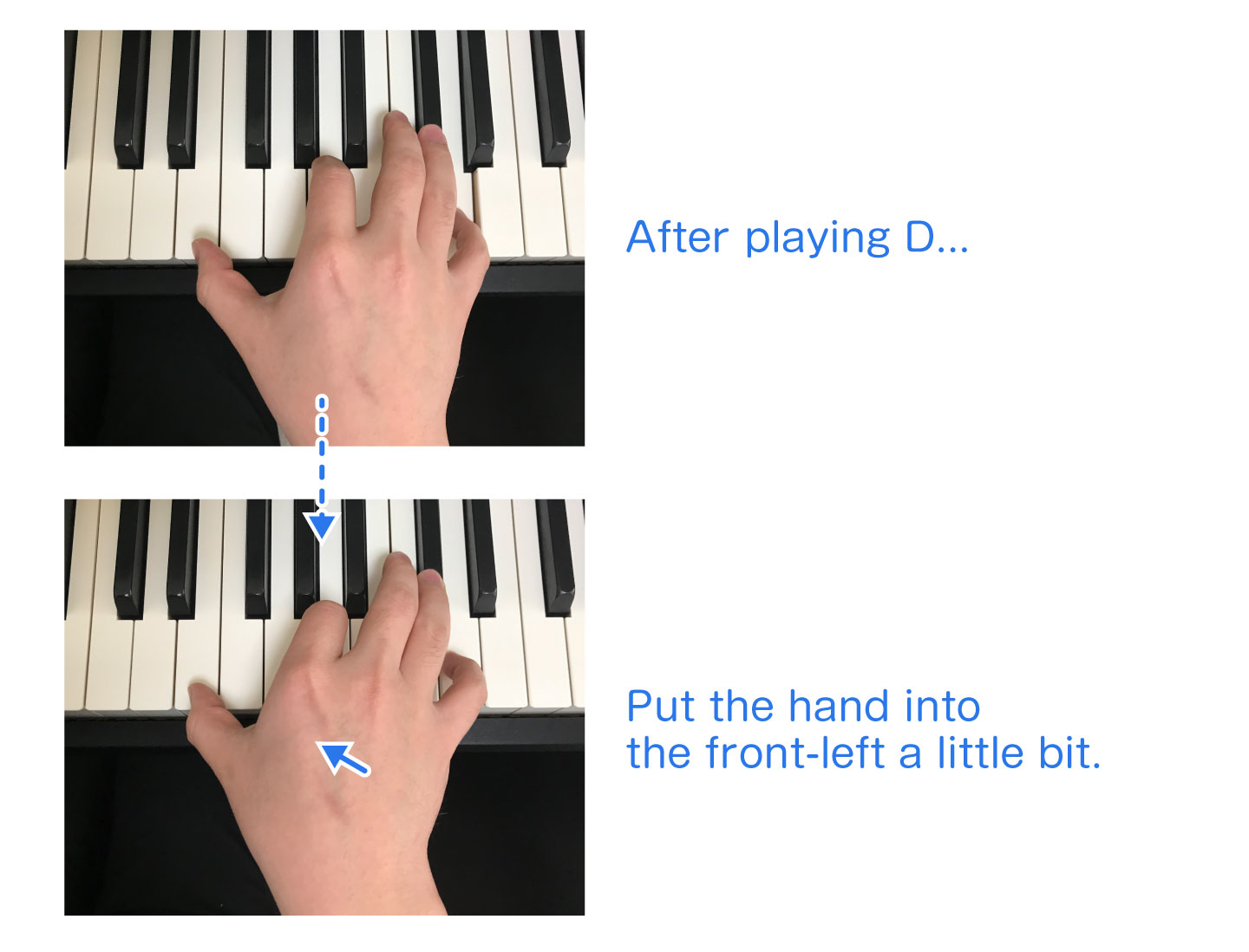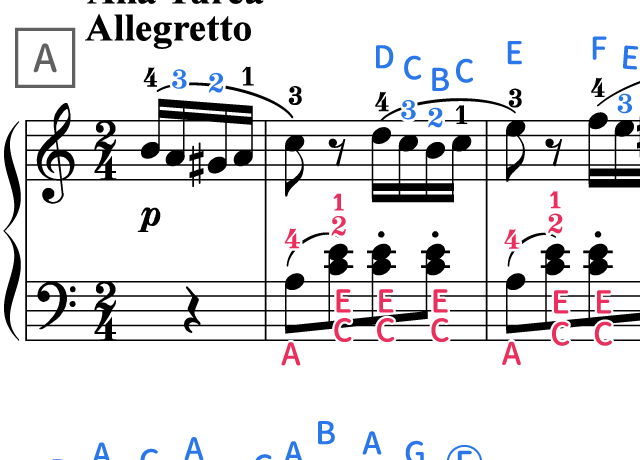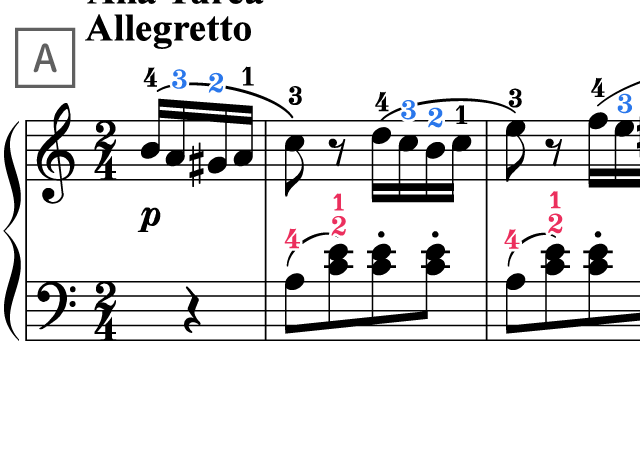How To Play (How To Practice)
1. Level : 4(Normal 2)
The difficulty is the same as that of last pieces of Sonatine Album or Sonatas.
This piece become easier for whom has big hands, because of the consecutive octaves by the right hand and the chords which have octaves by the left hand.
The fast passages of 16th notes require finger independence. But this piece is easy to read because of many repeats.
2. Beginning(A-B)
1. Play the 16th Notes Lightly
Pay attention not only to pressing the keys but also to lifting the fingers from the keys.
By lifting fingers quickly from the key, time for which you hold it becomes shorter.
That way, you can play with a light touch like Mozart.
(There is no need to play staccato.)

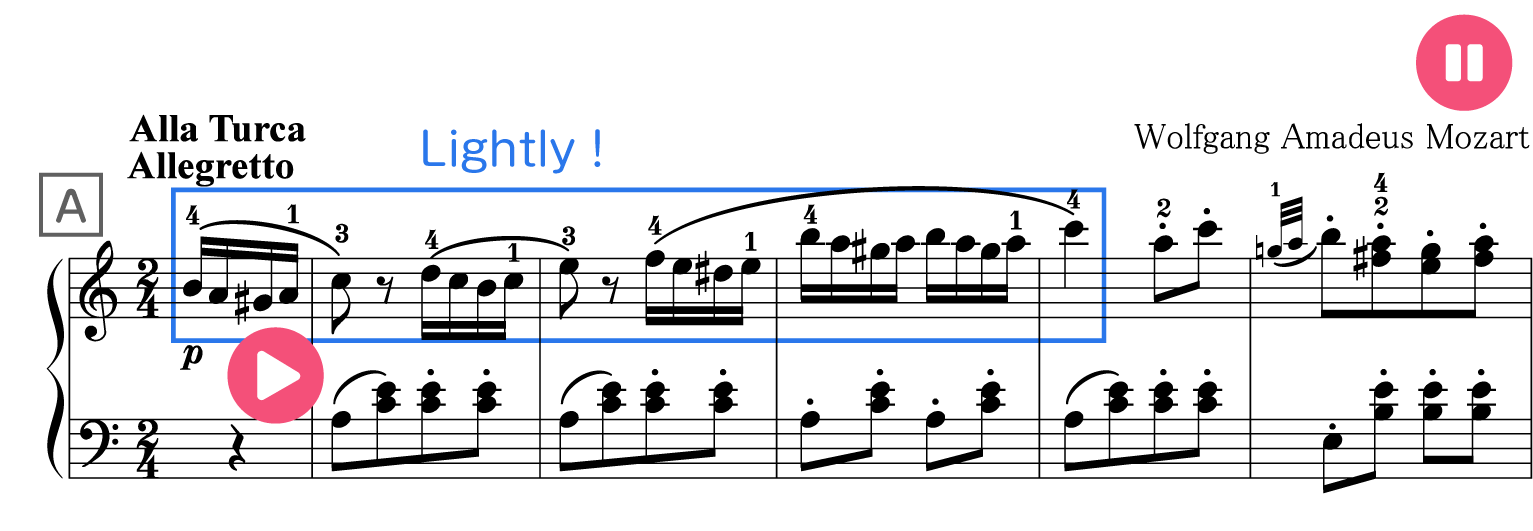
If you pay attention to lifting the fingers, you can also play each notes equally because of consentration on your finger tips.
2. Play the Grace Notes Quickly by Turning Wrist

Play the grace notes quickly so that the tempo is not disturbed.
You should not play three notes individually for that.
Settle the three fingers on each key G,A,B and turn the wrist clockwise.
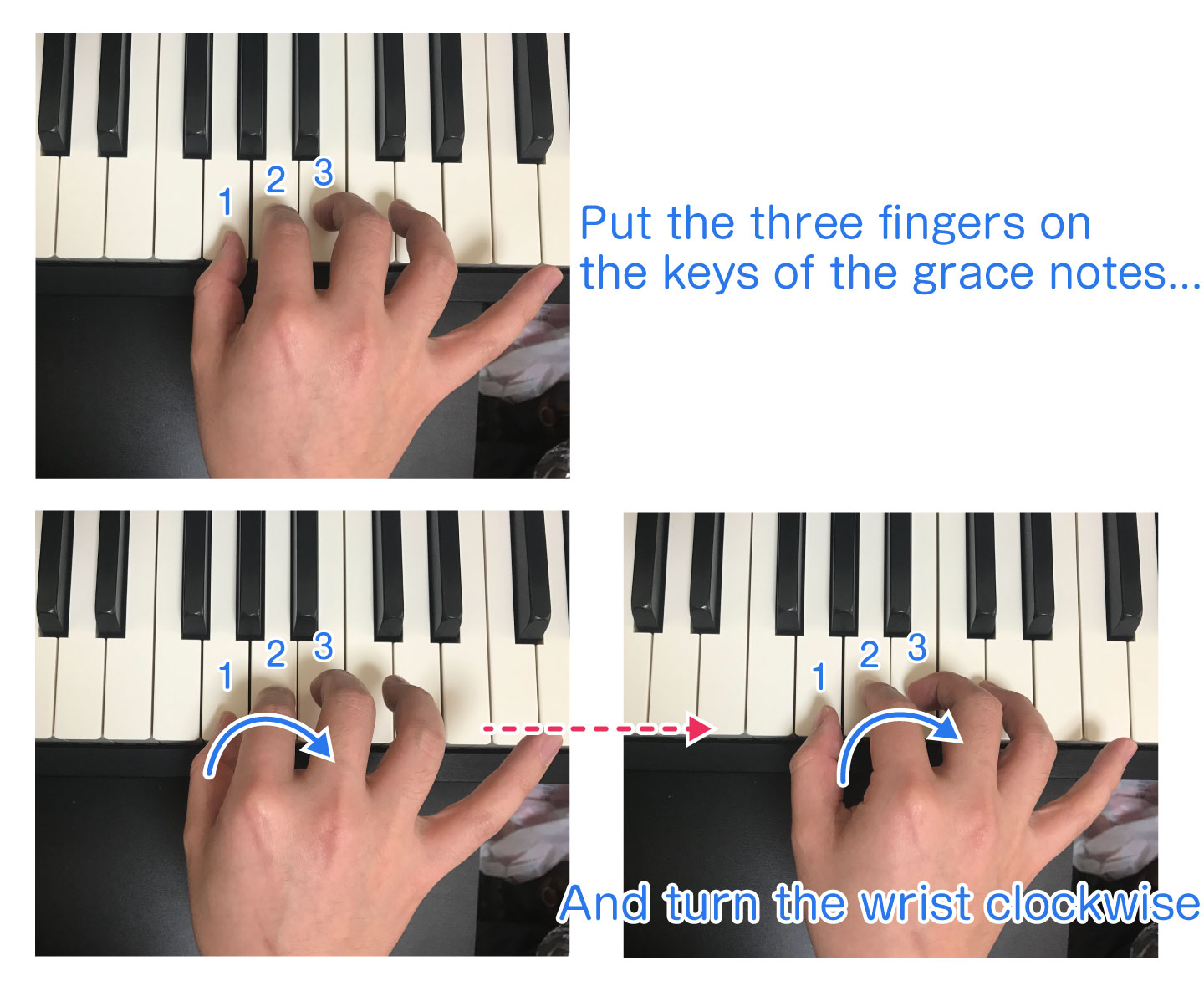
By the way, it is general to play grace notes "on" the beat in the pieces of classical period. But in this piece, which is quite fast, many pianists play them "before" the beat.
3. How To Play Thirds

Stand your fingers and play thirds at the same time
If your fingers are stretched and laid, it become harder to play the thirds at the same time. So you should curve your fingers and stand them on the keys. That way, the finger tips can be more sensitive.
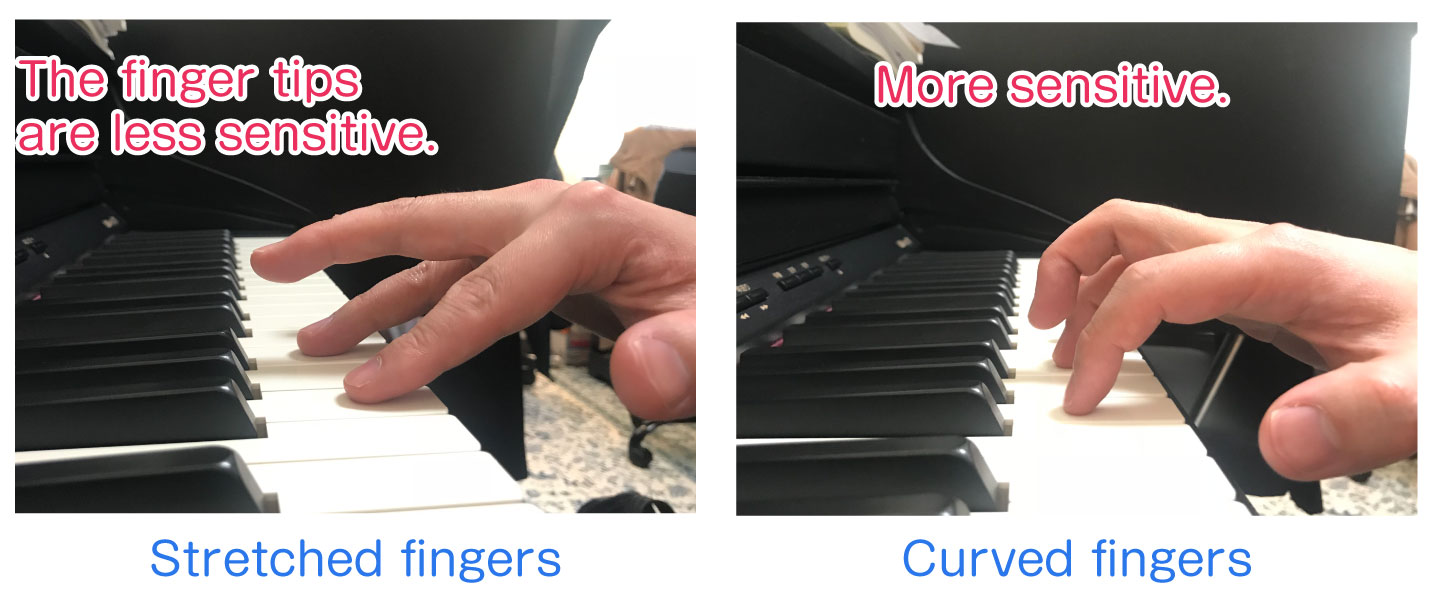
In many cases, the higher notes of thirds or sixths are the melody, and this phrase, too.
So try pressing the keys of the lower notes shallowly and the keys of the higher notes deeply to the floor.
The melody will be emphasized beautifully.
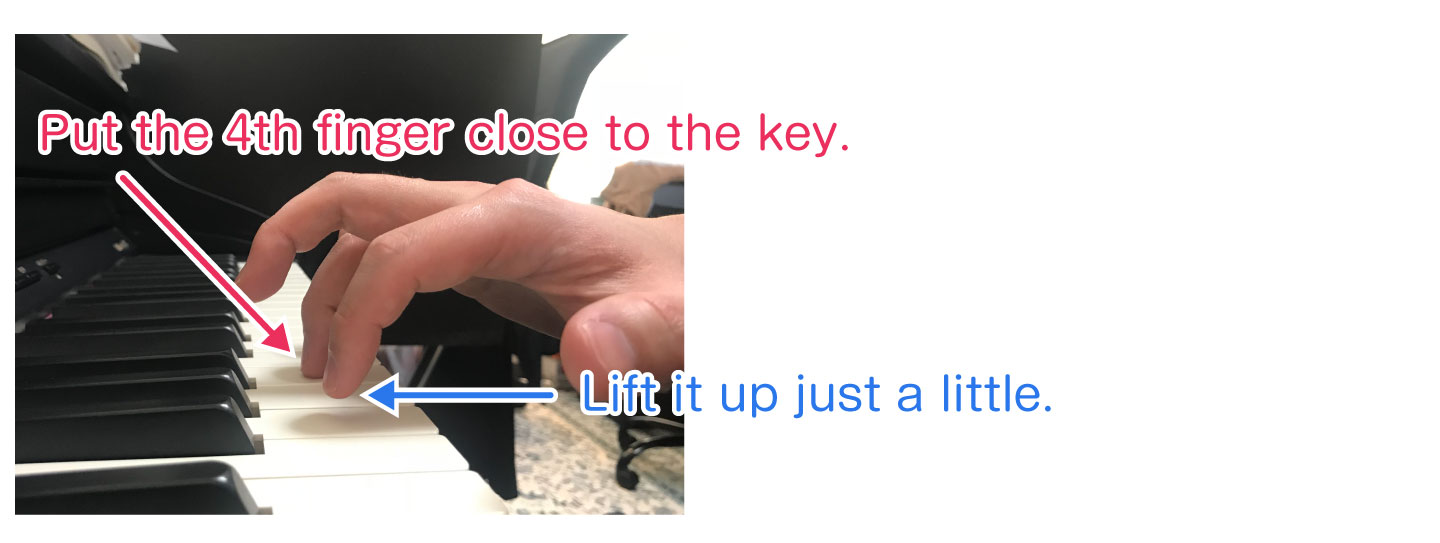
4. Play Dynamically With Left Hand!
To play dynamically, accent the bass notes just a little and play the others of the accompaniment lightly.
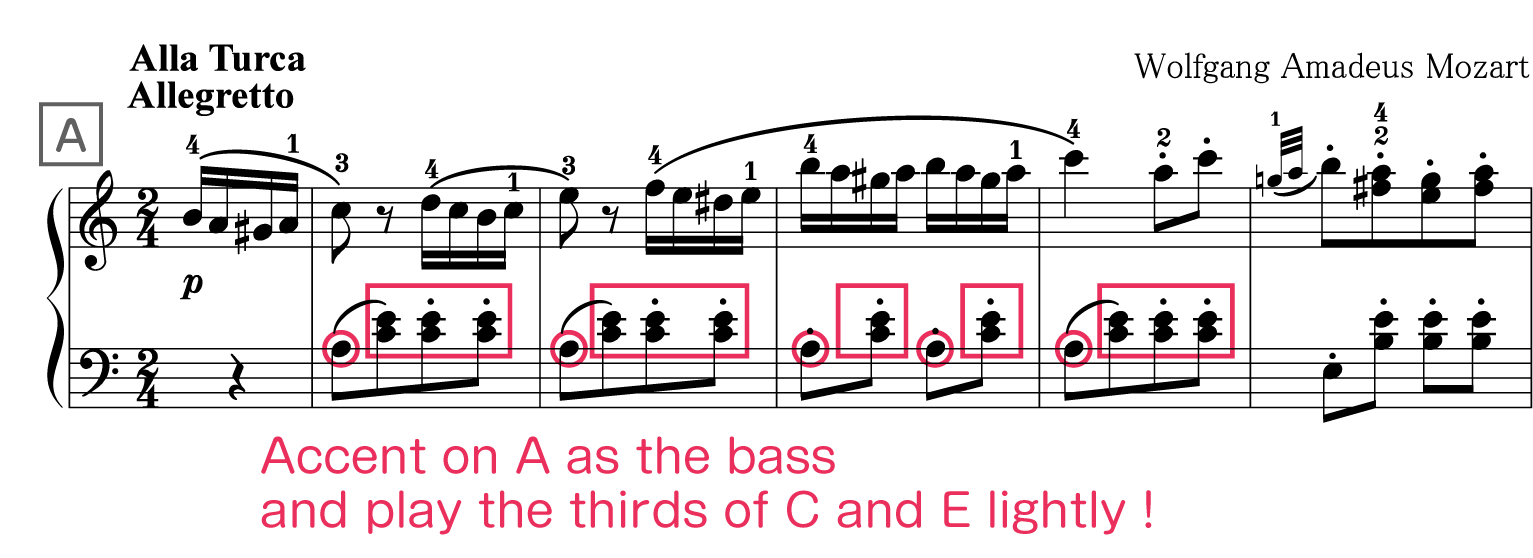
5. How To Play Octaves
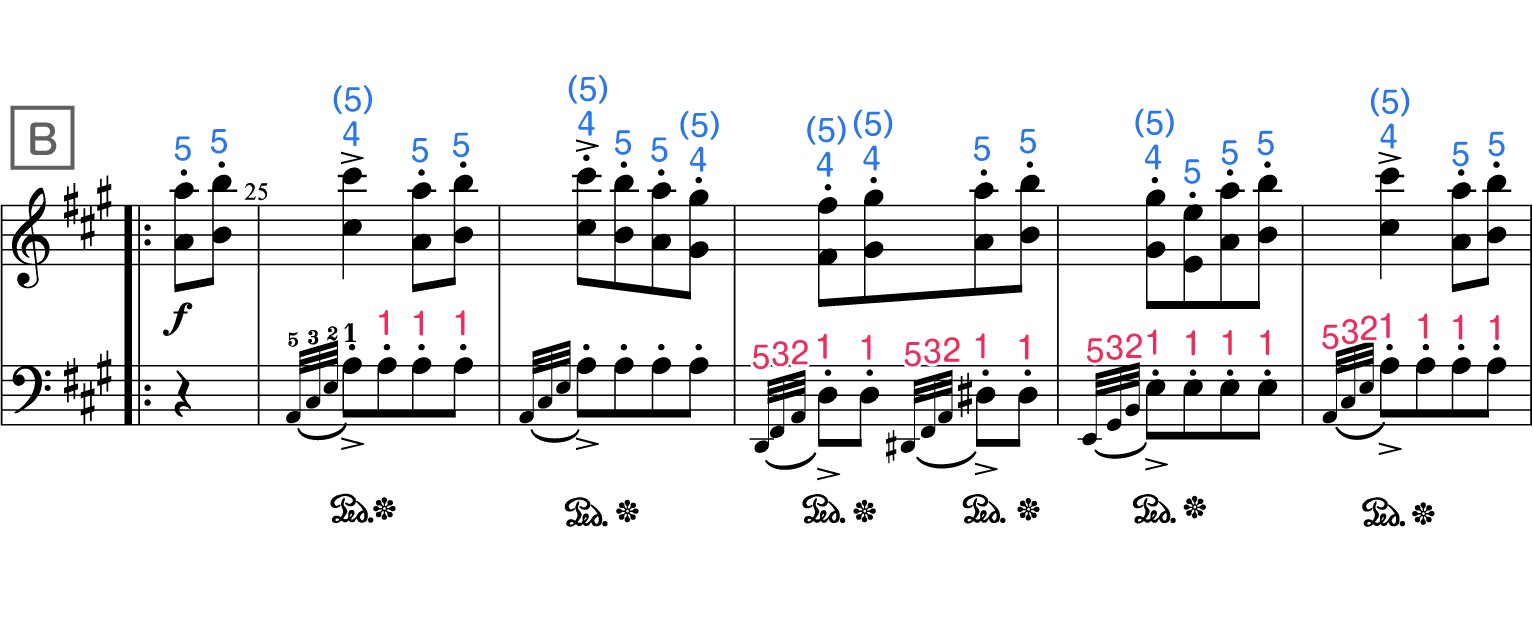
1. Keep an eye on your thumb when you play the octaves.
Master the width of the octave and play while loolking at your thumb.
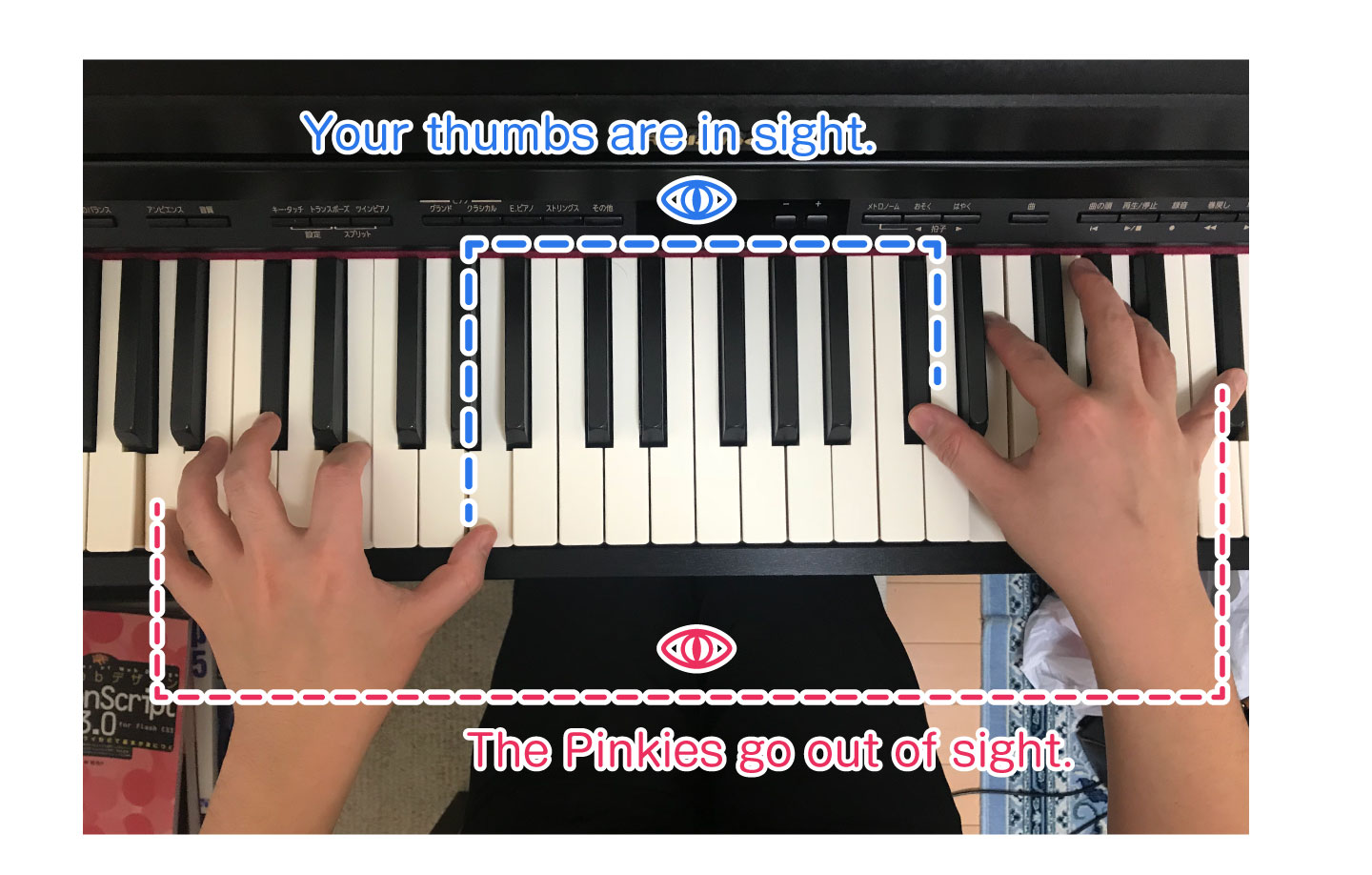
2. Advantages of using the 4th finger on the octaves
When you play consecutive octaves, you might play them all by thumb and pinky. But in the case that octaves contain some black keys, we recommend using also 4th finger on the black key. There are two reasons why you should use your 4th finger on the black keys when playing octaves.
- You can play octaves legato because of changing the fingers; 54・45. (It doesn't matter here.)
- Less movement of your wrist is needed so it will be easier to play correctly.
If you are a beginner, you should use only your thumb and the pinky finger. But when you get used to the phrase, try using the 4th finger!
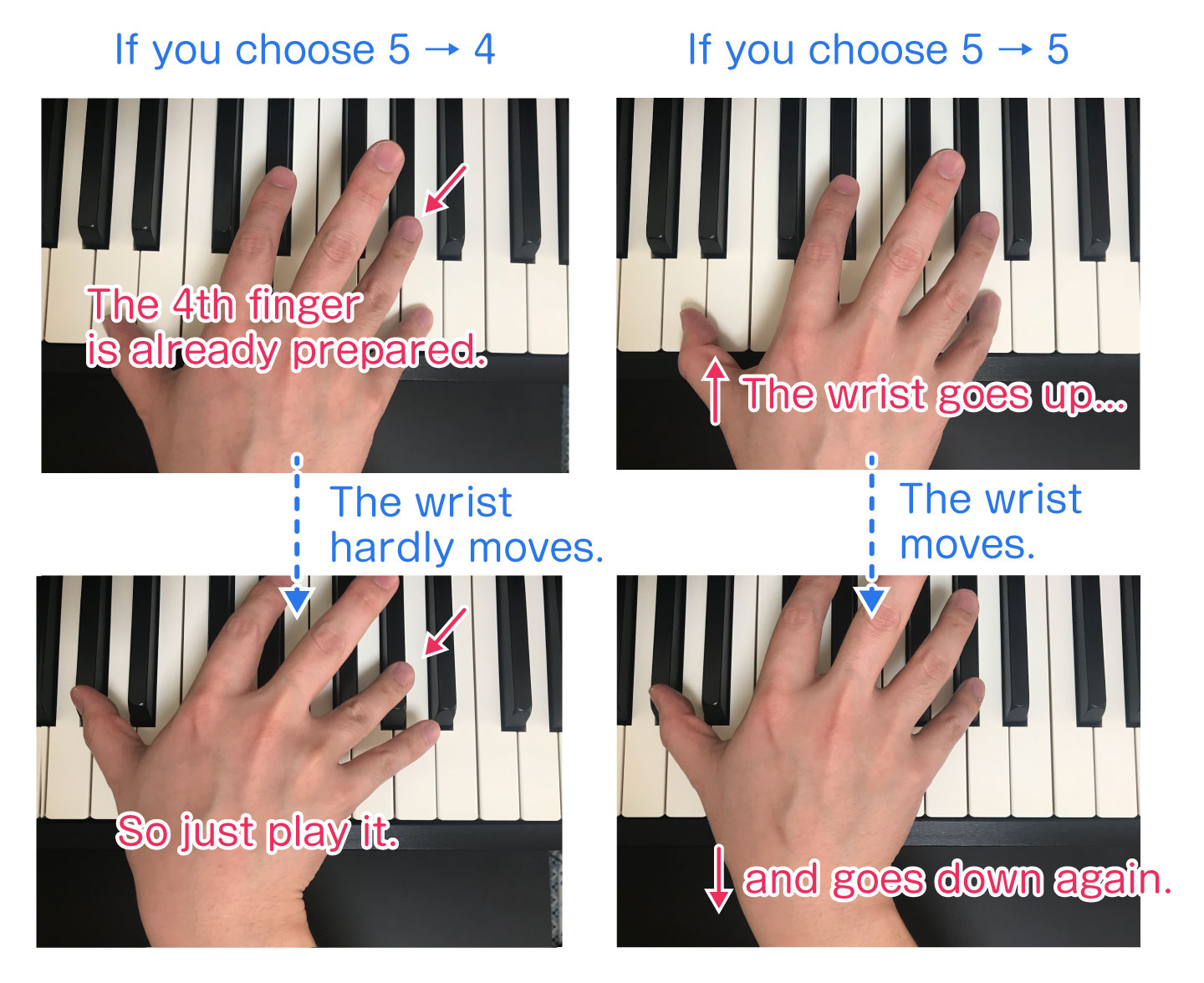
3. Make the Line of the Higher Notes [Optional]
When you play the octaves, make the line of higher notes.
That way, you can play brilliantly, and it's suitable for this piece.
If you stand the pinky finger on the key, you can make the sounds louder.
But usually, the first and second joint of the pinky finger is not strong. So it may be hard to make the melody line.
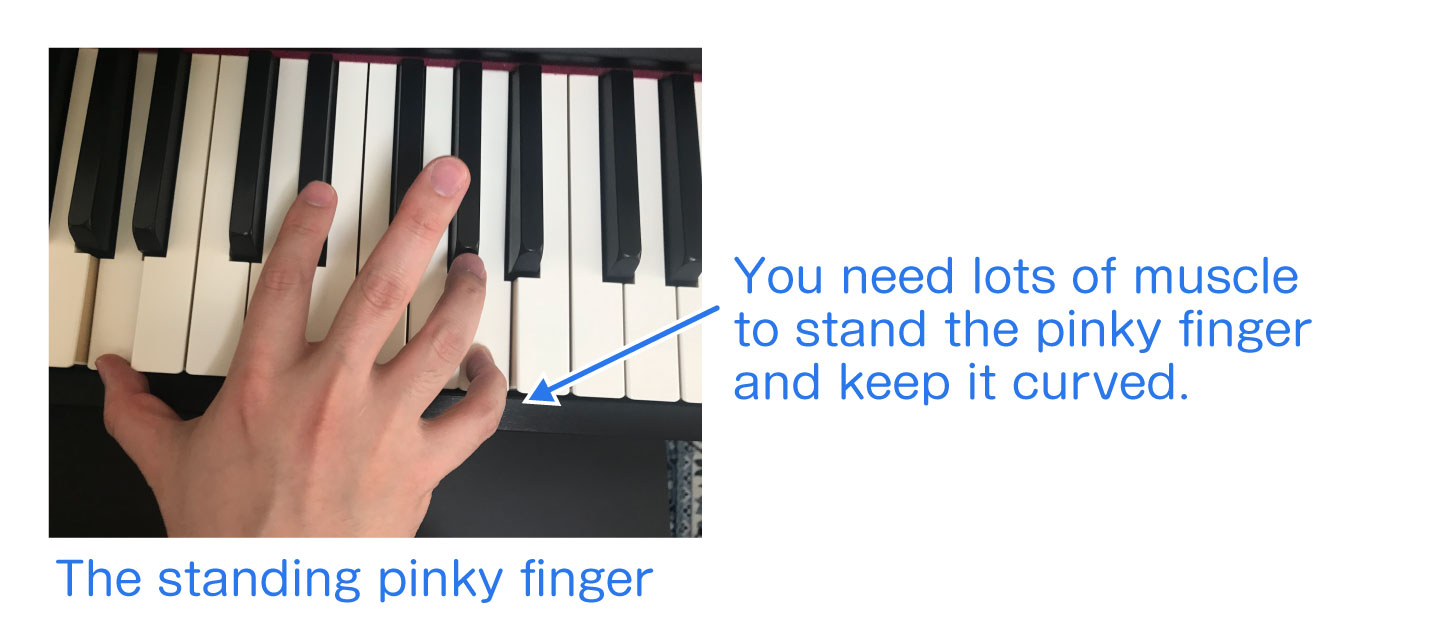
In such cases, by stretching the pinky finger tightly, you can make the higher notes brighter.
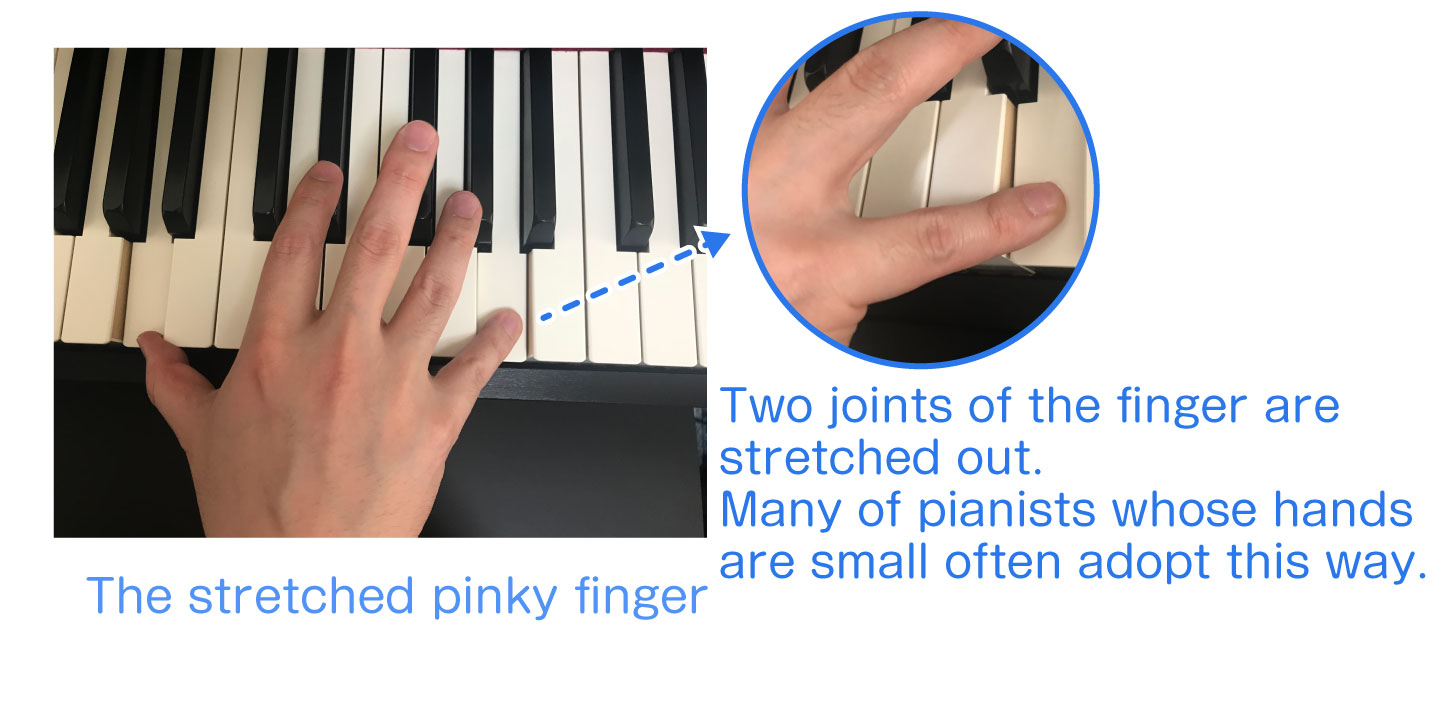
But in this way, the sounds might be too loud. Be careful!
4. How to Check the Octave Sounds
However you play, the important thing is to make sounds what you want.
Firstly, play octaves by both hands. Basically, play higher notes by the right hand, lower notes by the left. Then make the higher notes loud and clear.
And compare the octave sound by both hands and that by the right hand. Try making the latter sound in the same way as the former.
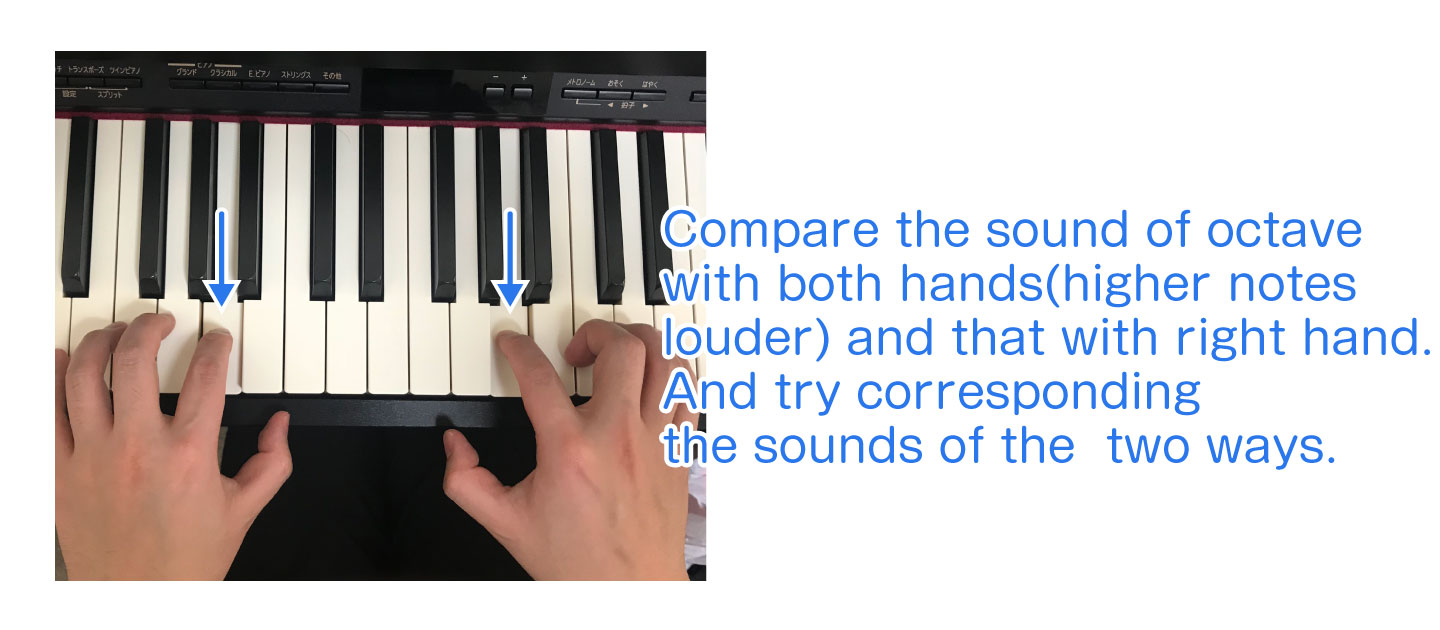
3. Middle Section(C-Coda)
1. How to Practice 16th Notes
1. Memorise Pitch Names
This part is difficult because of consecutive 16th notes.
Try reciting the pitch names before playing.
When you become able to recite smoothly, try playing while reciting.
That way, your brain, voice and fingers become linked clearly and you will play naturally.
Such a practice is effective in keeping the tempo and decreasing mistakes.


For beginners, E# is written as F but if you can read E# as E, that would be great.
2. Fix Fingering!
You should fix the fingering firstly. There are several ways so you can choose the fingering as you like.
It needn't be the same as above but deciding it firstly is important.
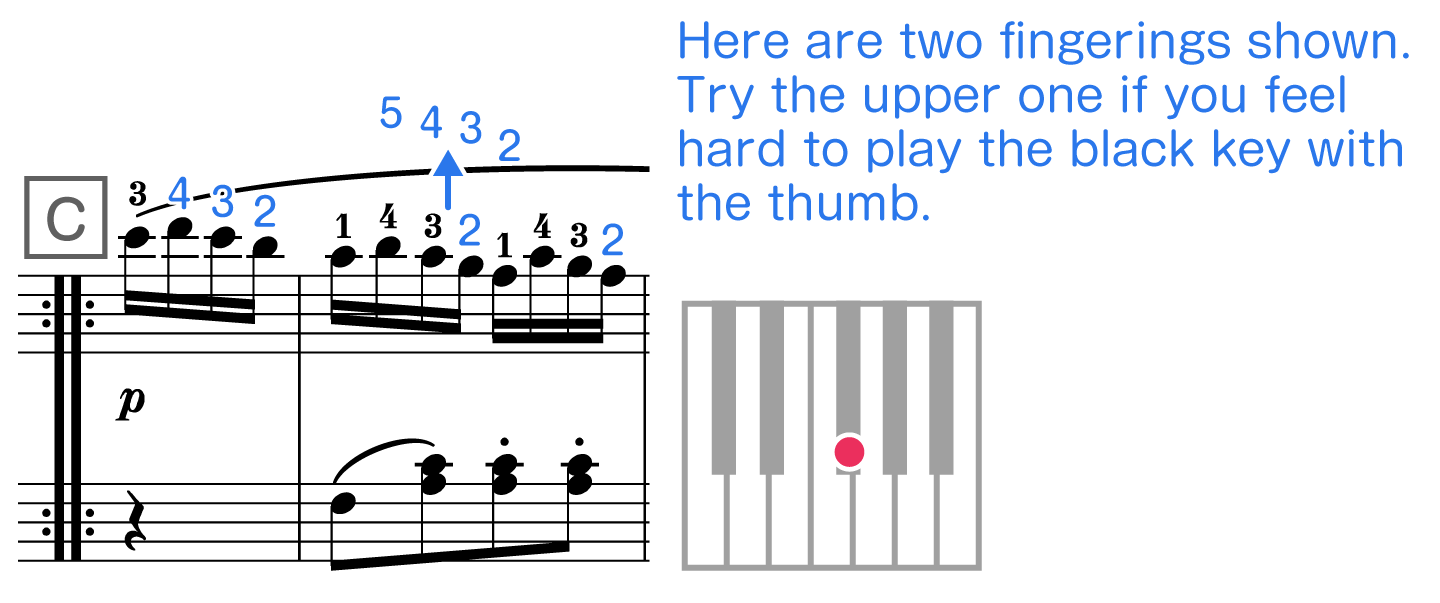
2. Make Line with Thumb in (AABBC#C#)
In this part of staggered octaves, it is natural to make the line of lower notes as downbeat.
That is different from the former part of octaves in which higher notes are emphasized.
Try using the 4th finger on octaves and you can decrease mistakes. It is the same as before
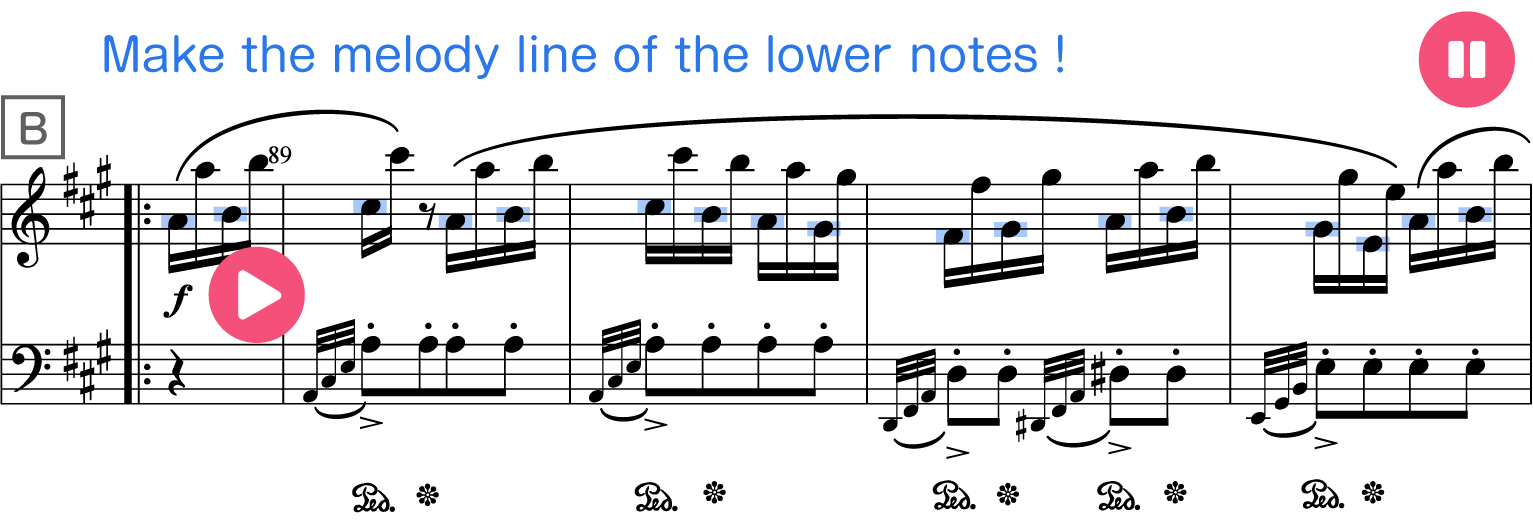
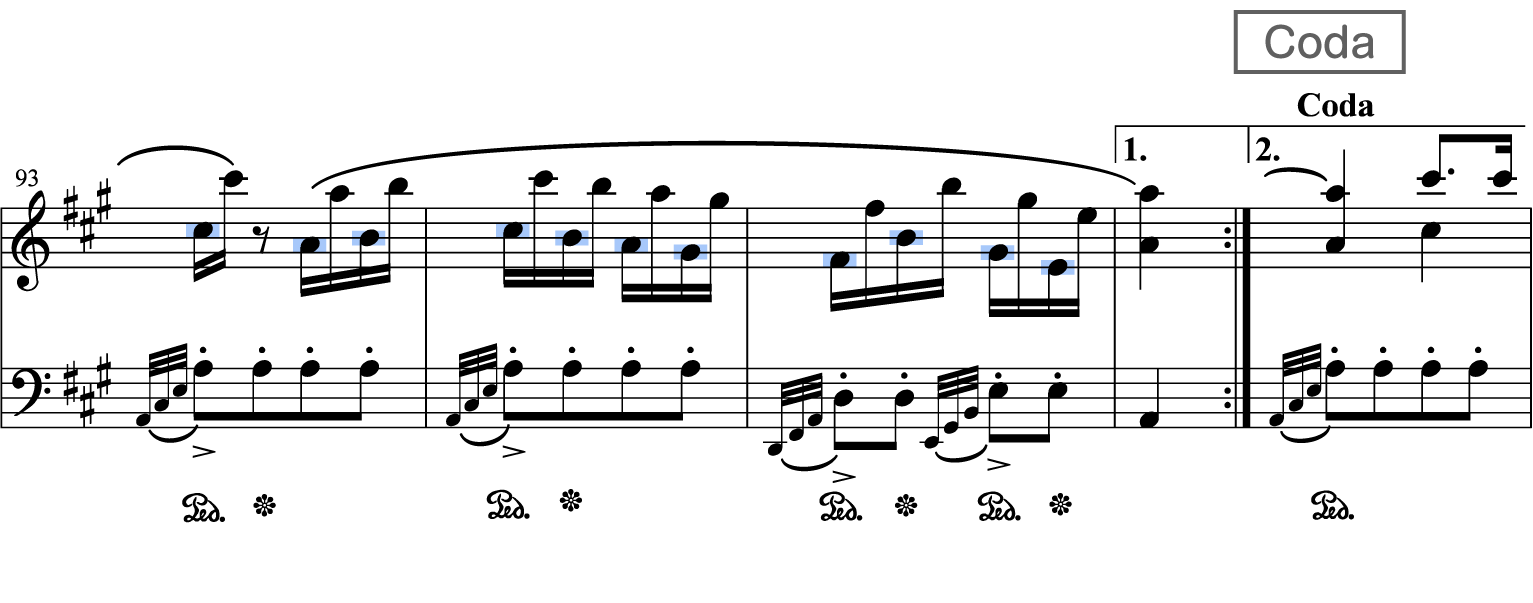
3. Just A Breath and Express Joy of Achievement or Accomplishment of Ideal
When coming into Coda, try taking just a breath. And you can express a feeling of joy, like achievement or accomplishment of ideal.
But if you take such a breath many times, it is not good taste. Use this technique appropriately at the right moment.
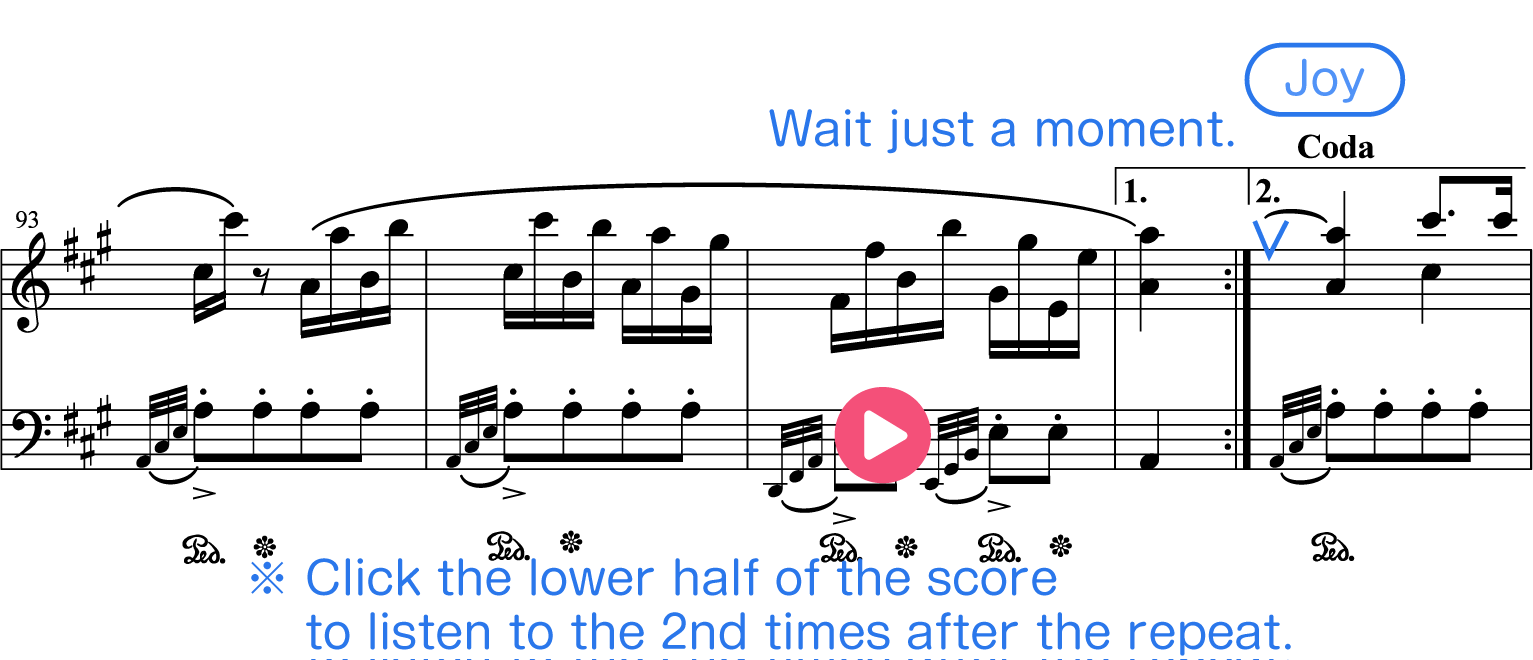
4. Put Hand to Right Side and Ring Out Highest Notes.

If you make the highest notes a little bit louder, the chords sound brighter and more glorious.
Though it is hard to play louder by the pinky finger, you should probably do that by putting the hand to right side. In addition, you may refer to this.
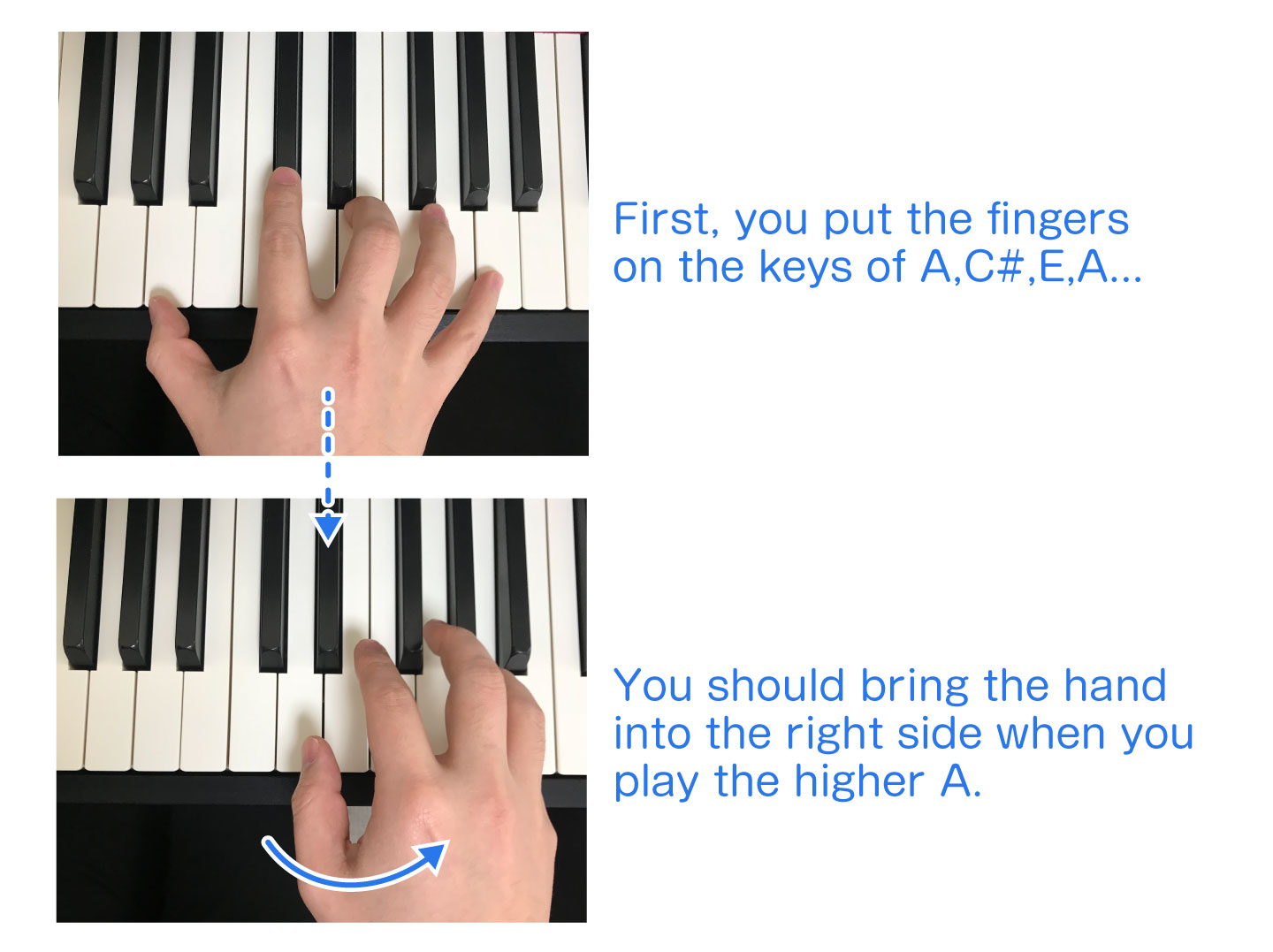
5. How To Play Consecutive Grace Notes

It is hard to play the consecutive grace notes by up-down of the fingers, you should move your hand like putting it forward.
Or you can play the grace note and the chord at almost the same time.
